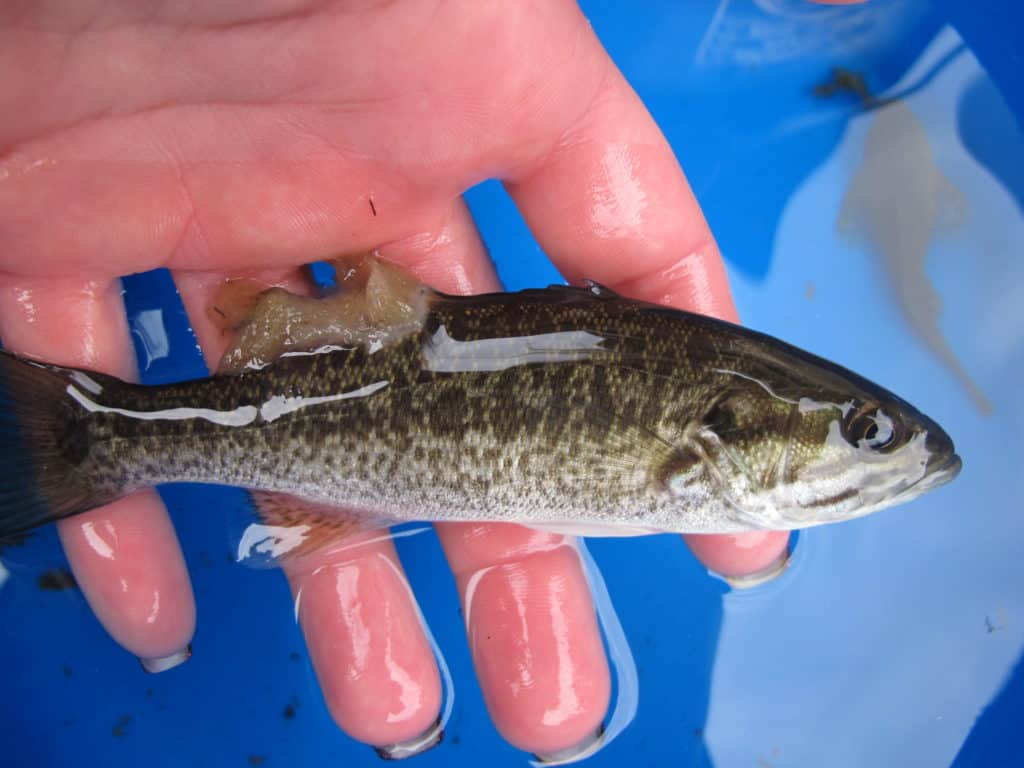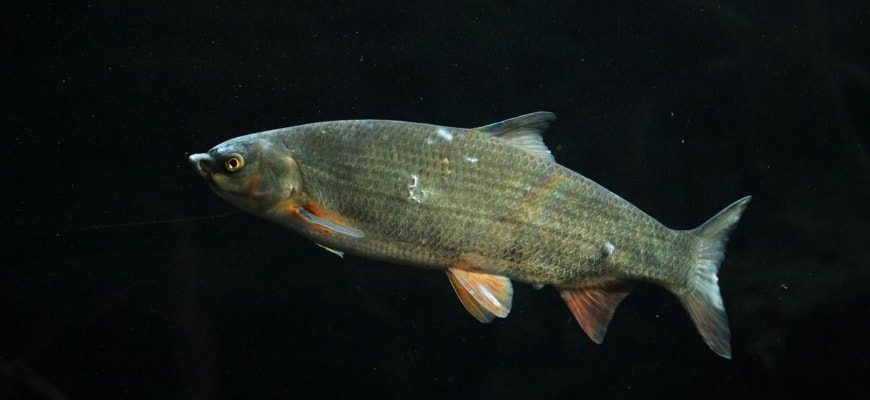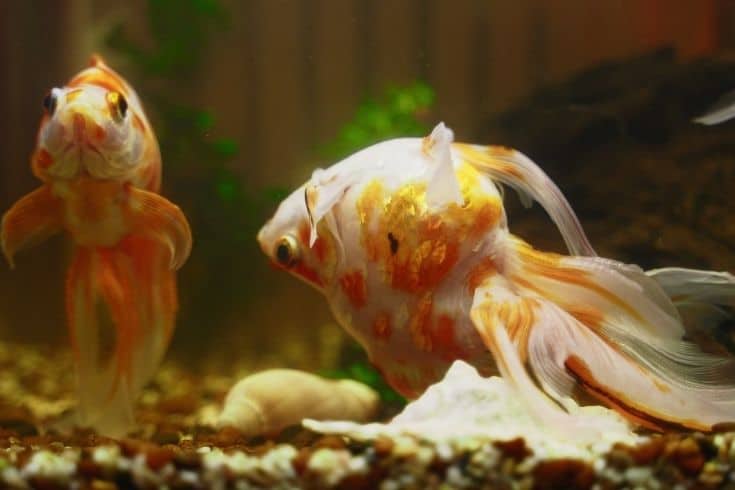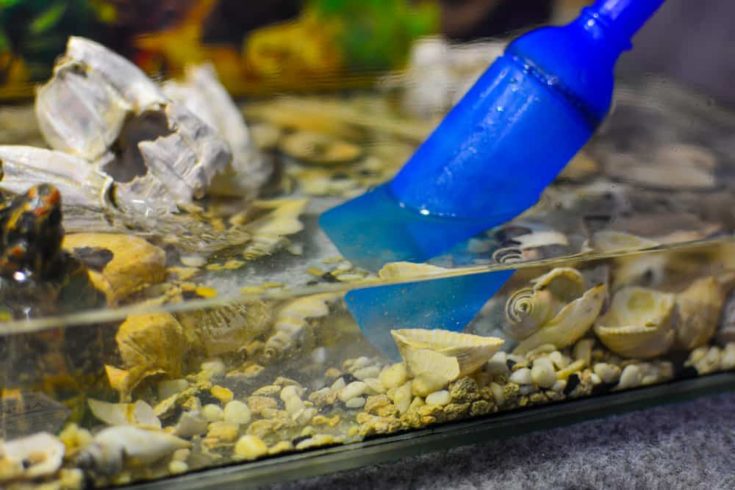Have you noticed cotton-like growths on your fish? Did you think it was dried scales or perhaps part of the food they were eating? Unfortunately, what you are seeing is probably a fungal outbreak caused by one of the many varieties of fish fungus that can affect aquarium fish.
Fungus in fish is not a fun thing to deal with. It typically affects the gills, fins, and bodies of fish. If left untreated for too long, it can cause death. This blog post will give you an overview of what fish fungus is and how to treat it in your aquarium at home!
What is Fish Fungus?

Fish fungus is a disease that affects the skin and gills of fish, typically in freshwater aquariums. As the name suggests, the common fish fungus is caused by fungal spores. There are many different species of fungus that can infect fish. These include Saprolegnia, Achlya, and Fusarium.
If left untreated, an infection by the common fish fungus can cause a secondary infection. This can lead to septicemia (bacterial infection of the blood), fin rot, or dropsy. Therefore, it is vital that we learn how to identify, prevent, and treat this fish disease as quickly as possible.
What Causes Fish Fungus?
The fungal spores associated with fish body fungus typically affect unhealthy fish that have been weakened by stress or injuries. However, fungal infections in fish can easily spread to healthy fish in poor water quality conditions.
The disease is usually caused by fish tanks that create a dangerous and stressful environment for its inhabitants. Some of the most likely causes of these infections include:
Poor Water Quality
By far, the leading cause of fungal disease in fish is substandard water quality. Fish that are housed in a fish tank containing lots of organic matter, poor oxygenation, and high levels of ammonia are more likely to sustain damage to their gills and skin.
Poor water conditions can also lower a fish’s immunity, making them more susceptible to contracting fungus.
Aeration
One of the most common causes of fungal infections in fish tanks is the lack of aeration. If your tank does not have an adequate amount of airflow, it can result in poor oxygenation and rapid buildup of harmful gasses, such as ammonia.
This will cause your fish to be constantly stressed out, making them more susceptible to contracting fungus or other diseases down the line.
Low Water Temperature
Colder waters are another leading cause of fungus in fish tanks. If your aquarium water is too cold, the body systems of your fish can slow down dramatically, causing immune responses to become compromised or delayed.
These conditions make disease outbreaks in your tank more likely, as your fish will no longer have the resources they need to fight fungal infections and other fish diseases effectively.
Overstocking Your Aquarium
Your fish tank should be stocked with a maximum of one inch of fish per gallon. If you have more than this, your aquarium will not have enough oxygen-rich fresh water for your fish to breathe and there could very well be overcrowding issues as a result!
An overstocked fish tank can also cause fish to start displaying aggressive behaviors that can injure or stress out shy fish. This will lower the immunity of your entire tank, making them more prone to fungal infections and bacterial infections down the line!
Signs and Symptoms of Common Fish Fungus
There are many different signs and symptoms of common fish fungus. If you notice any of these problems in your aquarium, it is important that you take action right away!
White or Grey Spots on the Skin

One of the most obvious symptoms of fish fungus is the appearance of white or grey spots on the skin. These will almost always be located around your fish’s fins and gills, but can sometimes appear on its body as well if your fish is severely infected.
These spots are caused by fungal spores that take root in your fish’s epidermis and begin to cause damage to the cells underneath. This is a severe form of skin damage that can result in a variety of different health problems, such as tissue death.
Furry Growth Along Gills
The second most common symptom of this type of fungal disease is the appearance of furry growths along your fish’s gills and near its mouth. You will likely spot signs of mouth rot, which is caused by spores that have taken root in your fish’s mucus membranes around its mouth and throat area.
Infection of the gills and mouth fungus will also cause your fish to have a difficult time breathing, as fungus can prevent water from being drawn in. This is an incredibly dangerous condition that can quickly lead to suffocation and eventually death for your fish if not treated!
Fish Lumps or Swellings
If you notice lumps or swellings on your fish’s body, it is important that you inspect them closely. If these lumps are bleeding at all, this could be a sign of bacterial infection and should be treated with antibiotics as soon as possible!

However, if the bumps do not bleed they may very well be caused by fungal spores that have taken root on your fish’s body. These lumps are caused by the growth of fungus on top of the infection, which can cause organ failure and tissue damage if not treated immediately!
Clamped fins
One of the key behavioral symptoms of common fish fungus is clamped fins. If your fish begins to clamp its fins and swim around erratically, it could be suffering from a fungal infection that has spread across its body.
This can happen if the initial spore takes root in one part of the body and then quickly spores throughout the rest of your aquarium’s inhabitants! This will cause your fish to display symptoms of physical pain and discomfort, which can be incredibly stressful for them.
Darkening Skin
Another common symptom of fish fungus is dark skin. If your tank’s water quality has recently gone through an issue, such as a power outage or filter failure, it may be to blame for the discoloration you see on your fish’s body!
However, if this color change does not go away after 24 hours with a healthy and balanced environment it is very possible that your fish has a fungal infection. This fungus can quickly spread throughout the rest of your tank’s inhabitants, so be sure to take action as soon as you notice these signs!
Fish fungus infections are rarely fatal on their own, but they can quickly become more severe if left untreated. If your fish displays any of these symptoms, it is important to consult a veterinarian or pet store professional for immediate help!
How Do I Prevent Fish Fungus?
Before we dive into treatment options for fish fungus, it is vital to note that prevention is the best form of cure. Common fish fungus is a disease that can be easily prevented by creating a stress-free, healthy aquatic environment for your fish.
To keep your fish happy and healthy:
Get A Good Filter
Filters are a great way to rid your tank of aquarium pathogens and waste, while also providing oxygen for your fish to breathe. When selecting a filter for your tank, make sure that it has the necessary filtration to keep your fish healthy. Here’s a list of common filter types and their recommended tank sizes:
- Sponge Filter: Best for tanks up to 20 gallons in size.
- Undergravel filter: Best for tanks that are at least 30 gallons.
- Canister filter: Best for tanks that are 20 gallons or larger.
- Power Filter: Best for tanks up to 100 gallons in size.
Choosing the right filter is vital, especially if you have a larger tank. Canister filters and power filters are typically seen as powerful filter options, but if you find yourself debating between the two, check out this helpful article.
Perform Frequent Water Changes
Frequent water changes are another effective way to keep your fish healthy. This is because aquariums with poor water quality typically have higher levels of ammonia, nitrites, and nitrates (harmful gasses that can cause stress in pet fish).

By taking out these harmful pollutants through regular water changes, you should be able to avoid problems down the line! A good rule of thumb is to perform a weekly partial water change of at least 25% to remove organic matter and maintain healthy water conditions.
Quarantine New Fish Before Introducing Them To Your Aquarium
When you bring new fish home from the pet store, it is important to quarantine them first to help prevent the spread of fungus and other diseases. To do this, you’ll need a separate tank with its own filtration system as well as quarantine supplies (which can be found on Amazon).
Quarantine for at least two weeks before introducing them to your main aquarium! Doing so will make sure that they are free from any harmful bacteria or parasites that could harm your other pets.
Feed Your Fish a Healthy Diet
One of the best ways to prevent fungal infections in fish is by feeding them a nutritious diet consisting primarily of high-quality pellets or flakes made for carnivores/omnivores. Where appropriate, supplement your fish’s diet with raw fish food sources such as brine shrimp.
A healthy diet prevents fish fungus by giving your fish all of the nutrients and vitamins that they need to maintain a healthy immune system. If a fish’s body is deficient in certain vitamins and minerals, fungus could very well develop!
Stock Your Tank Appropriately
Stocking your tank with an appropriate number of fish can minimize stress caused by overcrowding, which in turn lowers the risk of fungal infections. We recommend adhering to safe stocking guidelines based on the type of fish you own.
However, a good rule of thumb is to stock your aquarium with no more than one inch of fish per gallon. For example, a 20-gallon tank should contain no more than 20 one-inch fish. If you have overstocked your tank, do your best to re-home your fish immediately!
If you follow these tips for preventing fungal disease from developing in your aquarium, then you should be able to avoid problems down the line. Fish that are kept happy and healthy have higher immunity levels, which will help them fight off diseases before they become a serious issue!
Treating Fish Fungus Disease
If your fish does happen to develop a fungal disease, it is important to treat them as soon as you can. When in doubt, always consult a professional – be it a vet that specializes in aquatic pets, or an experienced aquarist at your local fish store. Fungal infections are incredibly painful for pet fish and could even lead to death if not treated!
Treating common fish fungus typically consists of two different methods: medicated baths followed by oral medication. Here’s a list of the most common fungal treatments:
- Fungus Cure (Nitrofurazone): Best fish fungus treatment for mild infections. Safe to use with ornamental koi and goldfish, but may cause skin irritation in some species of fish.
- Nova-Zyme F: Great all-purpose option that works well on a variety of fungal infections.
- Pimafix: A popular option for treating fungus in fish that don’t respond well to other medications. Can be used with goldfish and koi, but may discolor the skin of some species of fish.
- Fluconazole (Diflucan): Best treatment for stubborn cases of common fish fungus.
It is important to note that treatment with medication isn’t always necessary when it comes to treating fungal disease in fish. You can also opt for a more natural approach by improving the water quality of your aquarium and changing out your filter media at least once per month!
If you are still having trouble, then antibiotics may be needed. However, these are typically only used in cases where secondary bacterial infections have developed. Some good options include tetracycline, erythromycin, and kanamycin.
Remember that the most important part of treating fungus disease is to start as soon as possible! Even mild fungal infections can quickly develop into something much more serious if not taken care of right away, so don’t delay and treat your fish before it’s too late!
Conclusion
We hope this article gave you an in-depth look into how to spot, prevent, and treat fish fungal infections!
As you can see, common fish fungus doesn’t have to be a death sentence for your pet. By following the tips outlined above, you should be able to prevent fungal disease from developing in your aquarium–and if it does happen then there are plenty of ways to treat the problem.
If you have any more questions about fish fungal disease, then please post them in the comments section below! And if you found this article helpful, we’d be very grateful if you shared it with a fellow fish enthusiast. Thank you for your support, and have a fantastic day!
